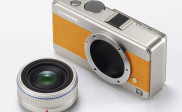Getting the Most Out of Common Digital Photograph File Formats
The photography has a treasure trove of digital resources at their disposal to ensure great electronic storage and great photographs. Digital cameras now have pixel depths to rival expensive manual cameras, and many of these digital cameras are available to the average consumer. Storing those photographs has also been made easy because of a convergence of camera technology with mobile devices, personal computers, and cell phones. The average consumer may not have a ready understanding of the ways in which digital photographs are stored and accessed on these devices, therefore it is important to look at file formats for digital images and see what that means for both quality of image and their use.
The two most commonly used file formats for digital images are JPEGs and TIFFs. Although there are always new devices and new formats being developed, these are the two that are most widely used across the internet and the industry. As we will see, each file format has its strengths and weaknesses in terms of image quality and file size.
For the average consumer, having a digital camera goes hand in hand with sharing those images on the internet. Since the photographer has a need to send large files over the internet, the JPEG format is most often used as the default file format for digital images. JPEG stands for Joint Photographic Expert Group, and it was developed specifically to have a digital file standard for viewing photographic images on the computer and over the internet. Although greater bandwidths have made the JPEG less useful than it used to be, its prevalence means the consumer should have an understanding of its characteristics.
JPEG files are smaller by nature of their design. They use lossy compression to reduce the overall file size of the image. They achieve a smaller image size by compressing the image so that details that are most relevant remain a part of the image. Details that are not visually relevant are disposed. This is possible because of the function of the human eye. Our eyes are great at noticing subtle differences in contrasts, but we do not perceive differences in value as well. These are the details that the JPEG format removes. This also the reason why the edge of a dark form in some JPEGs appears pixelated with greater magnification. Some image editing software allows the individual to determine the level of lossy compression that an image should have, but most digital cameras have a default setting that a consumer should examine.
The other file format that is commonly used is the TIFF. TIFF stands for Tagged Image File Format, and is most often used in printing. This is because TIFF file contains much more information, and retains all its information in either compressed or uncompressed states. Because of this, TIFF files tend to be much larger than their JPEG counterparts, but have the advantage of being able to be saved without the kinds of compression artifacts that a JPEG can contain.
Understanding how these two file formats work for digital imagery is important. For sending and sharing digital photographic files, JPEGs are a great choice. For printing and archival concerns, the consumer should stick to the TIFF format.




